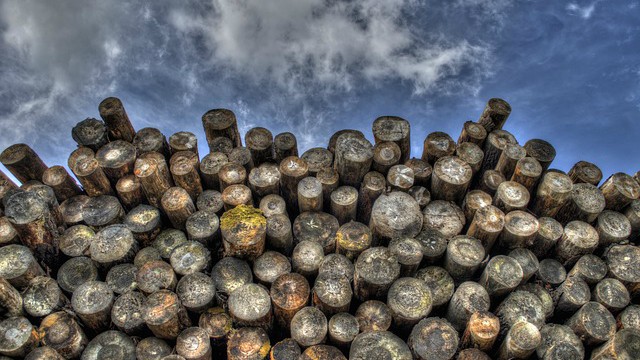Canfor Corporation (TSX:CFP) is a Canadian integrated forest products company that is one of the largest softwood lumber producers out there. The company owns lumber mills in British Columbia, Alberta, as well as in the United States.
The recent wildfires have been wreaking havoc across B.C. of late; as many as 120 fires are spread across the province. Many B.C. mills have been closed because of the wildfires, and it appears that the production stall may last longer than originally anticipated as the situation doesn’t appear to be resolved anytime soon as a huge cloud of smoke blankets B.C.
Forestry companies like Canfor have enjoyed a nice rally following news of the of the wildfires as pundits pointed out that lumber prices could increase by as much as 8% thanks to a lower supply as a result of the wildfires.
I think Canfor’s wildfire-induced rally is a perfect opportunity to take short-term profit off the table as long-term headwinds begin to mount in the years going forward. Shares are still down over 35% from their February 2015 highs and appear to be attractively valued, but there’s a huge cloud of uncertainty regarding border taxes right now that would have a negative impact on the company’s bottom line if the Trump’s protectionist policy comes to fruition sometime over the next few months.
Anti-dumping and countervailing duties are something to be worried about, but investors seem to think everything will be fine since the Canadian government made it clear that it will support protected industries like forestry if such U.S.-imposed duties cause a significant amount of financial distress.
Interest rates are also expected to continue to rise over the next few years, and this will gradually reduce Canfor’s profitability. Rock-bottom interest rates were a huge tailwind for Canfor over the years, but this tailwind is turning into a long-term headwind.
Although there are many long-term headwinds, there are also positive some developments. The strengthening U.S. economy under Trump’s agenda will likely result in an increase in new housing units being constructed over the next few years. A spike in the number of “housing starts” means higher demand for lumber, which is good news for Canfor, but I do not believe this trend will offset Canfor’s headwinds.
Valuation
The stock currently trades at a 14.34 price-to-earnings multiple, a 1.7 price-to-book multiple, a 0.6 price-to-sales multiple, and a 4.5 price-to-cash flow multiple, all of which are lower than the company’s five-year historical average multiples of 36.4, 2.1, 0.9, and 7.8, respectively. Shares appear to be ridiculously cheap, but they’re cheap for a reason.
There’s a great degree of headline risk associated with owning shares in the coming months. Although there are many headwinds, there are tailwinds as well. I’m not sure if they will balance out, but investors should definitely be cautious owning this name, as volatility is likely to continue going forward.
Stay smart. Stay hungry. Stay Foolish.








